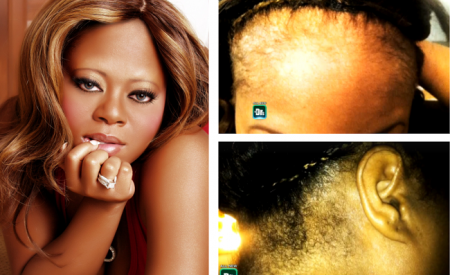
Are you struggling with Hair Breakage? you’ve come to the Right place. Below is an advice from renowned dermatologist, Dr. Susan Taylor, on how to reverse Hair Breakage.
What can you do if you notice hair breakage? There are several simple measures that can be done to stop and reverse your hair breakage.
- Recognize that your hair is breaking and take action. By that I mean, sometimes we find it difficult to recognize or even admit that our hair is breaking. The experience can be very traumatic. If you suspect breakage, ask your hair stylist or a family member to take a look at your hair to determine if there are areas that are shorter than others. If that is the case, it is time to take action (see below).
- If you have relaxer in your hair, analyze how often you get a touch up. Ask yourself if you could be getting touch-ups too often. For some women, using relaxers too often can damage and weaken the hair shaft and cause breakage. Generally, touch-ups are performed every six to eigh weeks. Determine if you can possibly space your relaxer out to every eight or ten weeks or longer, particularly during the winter months when there is little to no humidity and you hair is less likely to revert. Can you use moisturizers more consistently to smooth and “tame” the new growth until it is time for a touch up? Can you use a wide-tooth comb to gently comb the hair, beginning at the ends and working up towards the root to minimize breakage? Can you avoid pulling and tugging the hair when combing new growth?
- Combining two chemical processes such as permanent hair dyes or highlights, containing hydrogen peroxide, with relaxers can lead to damaged hair shafts and breakage. I generally suggest picking one or the other chemical treatment and avoid using both chemical treatments on your hair. However, if you do use both chemicals, do not have them done at the same time but rather, wait several weeks after applying one to your hair before applying the other. Additionally, condition your hair regularly and minimize heat from blow dryers and curling or flat irons if you have both chemicals in your hair.
- Excessive heat may also damage the hair and produce hair breakage. This may be from hot combs, curling irons, flat irons, blow dryers, hooded dryers, or hot rollers. Do not use these implements more that once a week. See if you can decrease the heat that is generated from them by turning the setting down. Roll, pin curl or wrap your hair at night so that you do not have to apply heat in the form of curling irons or flat irons each morning.
- The hair of many black women is very fragile and studies have demonstrated that normal brushing and combing the hair can result in breakage. Brushing your hair 100-times a day is a no-no for our hair. Only comb and brush your hair to style it. Also avoid rubber bands or other implements that can physically cut into and break the hair shaft.
- Natural hairstyles are not immune to the possibility of hair breakage. If twists or locks are twisted too tightly, hair breakage may occur. Have you experienced a twist, lock or braid snapping off?
- Hair care practices that you could once tolerate (relaxers, blow drying, flat ironing) may result in breakage at another time in your life. Just like your body, your hair changes. If hair begins to break, ask your stylist what you can do differently. You might wear a wig for a period of time or smooth your hair back in a loose ponytail.
- Trim the damaged ends of the hair, wash and condition the hair every two weeks.
Full article can be found on: http://www.huffingtonpost.com/dr-susan-taylor/black-women-hair-loss_b_1457285.html?ref=hair-beauty




I’m not that much of a internet reader to be honest but your sites really nice,
keep it up! I’ll go ahead and bookmark your site to come back down the road. Cheers